#western roman empire
Explore tagged Tumblr posts
Text
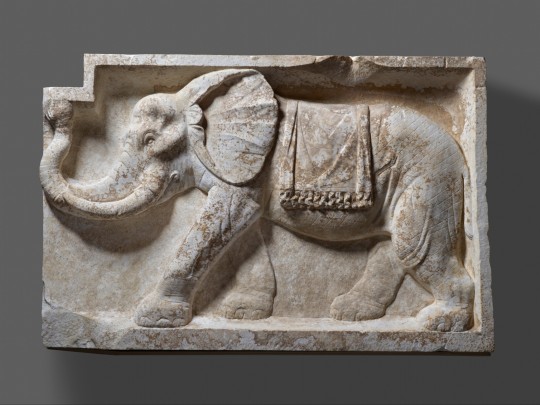
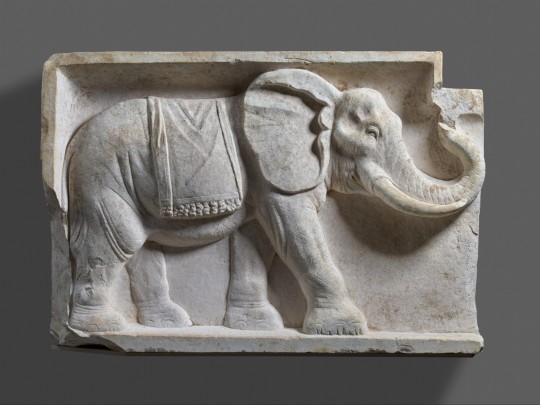
~ Pair of Architectural Reliefs with Elephants.
Date: A.D. 80–100
Culture: Roman
Place of origin: Western Roman Empire
Medium: Italian marble
#ancient#ancient art#history#museum#archeology#ancient sculpture#ancient history#archaeology#getty#western roman empire#roman#architectural relief#elephants#a.d. 80#a.d. 100#Italian marble
2K notes
·
View notes
Text
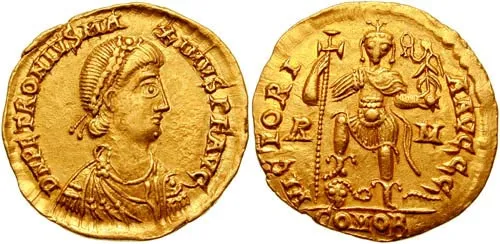
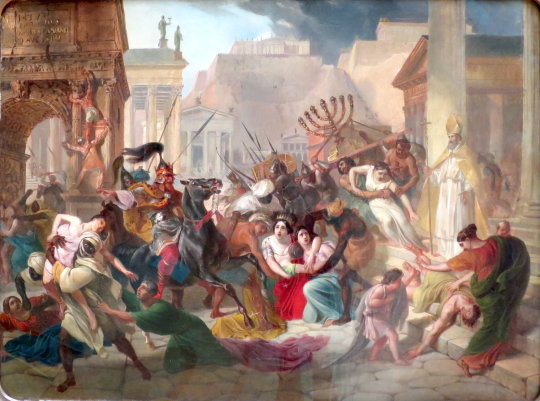
Petronius Maximus --- The dipshit Roman emperor who caused the sack of Rome because he was an arrogant dipshit.
Petronius Maximus was a wealthy Roman politician born in 397 AD to old Roman money. Like many wealthy Romans he went into politics and throughout the early 5th century climbed the ranks of Roman government until he became one of the most powerful men in the Western Roman Empire. He was crafty and he was ambitious. He was also a dipshit and an asshole.
By the 450's P. Maximus had a clear plan, to create a power vacuum in Rome that he could cunningly fill. He began by turning the emperor at the time, Valentinian III, against his magister militum Flavius Aetius. As magister militum Aetius was commander of the Roman Army, and had proven himself a master tactician and brilliant diplomat. Through military victories and diplomacy Aetius was barely holding a crumbling empire together. Maximus convinced Valentinian III that Aetius was looking to usurp his throne. Thus in 454 Valentinian summoned Aetius to his palace and personally murdered him with his sword. Maximus had organized the death of the most talented Roman official in the empire, which in the grand scheme of things was probably a big mistake. With Aetius dead, Maximus expected he would take Aetius' place as magister militum. However Valentinian refused to appoint him as magister militum. Thus in 455 AD, Maximus had him assassinated, hiring two of Aetius' bodyguards to do the deed as revenge.
Several powerful Romans claimed the Imperial throne but Maximus managed to beat them all to the punch by taking over the Imperial Palace and immediately marrying Valentinian's widow, Licinia Eudoxia. Licinia didn't know Maximus had murdered her husband at the time but had suspicions. He also forced her daughters, Placidia and Eudocia to marry his sons. Through deceit and murder Maximus had managed to weasel his way into the Roman Imperial family and was now creating his own Imperial dynasty. Thus Petronius Maximus had become Emperor Dipshit, ruler of the shiny turd of what was left of the Western Roman Empire.
Problem was, when Emperor Dipshit married off Placidia and Eudocia to his sons, he canceled Eudocia's arranged marriage to Hunneric, who was the son of Geiseric, king of the Vandals. The Vandals were a Germanic tribe that had set up a prosperous kingdom in the former Roman province of North Africa, and were constantly raiding the Italian coast. Valentinian had arranged the marriage of Eudocia as a peace offering to Geiseric. Geiseric had received a letter from Eudoxia informing him that Maximus had killed her husband and was canceling the marriage of Eudocia. Geiseric was enraged at Empror Dipshit for canceling the marriage, and sent a Vandal fleet and army to Rome in response. "No problem" said Emperor Dipshit, "we got the Roman Army".
Except there was no Roman Army. Not really. After the death of Aetius the remains of the standing full time professional army had collapsed almost completely. Even Aetius was very dependent on mercenaries and allies. Nobody wanted to enlist in the Roman Army in the 5th century, with Romans going so far as to cut off their own fingers to avoid conscription. The Roman economy was a mess, the Imperial bureaucracy was riddled with corruption, the life of the average Roman was miserable, and by the 5th century most Roman emperors were snobbish, over-privileged, incompetent out of touch dipshits. The empire was dying and everybody knew it. Few believed it was worth saving, and nobody wanted to die for a dipshit emperor such as Emperor Dipshit. By 455 AD what was left of the Roman Army consisted of militia units called "limitanei" who acted as border patrolmen far away from Rome. For more complex military operations the Romans were fully dependent on mercenaries and allies. Emperor Dipshit attempted to enlist the help of the Visigoths, but they were like, "LMFAO nooo, you made your bed now lie in it!" I speculate they knew Maximus was a dipshit who was probably gonna get them all killed.
Emperor Dipshit knew it was a hopeless situation, so he made an announcement to the Roman people to flee and save themselves, then he too turned tail and fled. He was spotted by a large group of Roman refugees, who formed a mob and beat him to death. Good riddance. Emperor Dipshit's glorious reign lasted 77 days.
As far as sackings go the sack of Rome in 455 AD wasn't too bad. The Vandals were Christians, so the Pope was able to convince them not to do the more horrible things like rape and murder civilians, or burn down the city. So for the most part the Vandals refrained from bloodshed and arson. However they did take as many Romans into slavery as they could fit on their ships, and they also looted the city of almost everything of value. Even the bronze tiles on the roof of the Temple of Jupiter were pried off and carted away. Also Geiseric carted off Eudocia and married her off to his son Huneric.
The Vandal's sack of Rome in 455 is where we get the term "vandalism" today. Also did I mention that Petronius Maximus was a dipshit?
#history#ancient history#ancient rome#dipshit#fall of rome#vandals#roman empire#western roman empire#late roman empire
227 notes
·
View notes
Text
The Salic Law/ Lex Salica

The Salic Law is the written law of the Frankish empire. Its origin is both in Germanic customary law and Roman criminal law. Continuing Roman law fitted in the “Imperium Romanum Aeternum" or the idea that Rome was everlasting (the early Merovingians still saw themselves as Roman and didn't consider the (Western) Roman Empire "fallen").
There are many versions and interpretations of the Salic Law, depending on the Germanic additions made to it. This is especially true for customary law, punishments and inheritance. The most famous rule included in the text is that Kings/rulers have to be succeeded by their eldest son.
In some instances, new laws and punishments were added after incidents occurred which were not previously considered. There were for example different punishments for people who were free vs. slaves. Punishments could also vary, depending on the amount of people involved. Later Catholic additions include the banishment of pagan elements such as animistic practices, future predictions or the names of our weekdays. Some of these banishments are the only documented proof of certain pagan elements which were successfully oppressed by Christianity, such as the habbit of saying "bless you" after a sneeze. This indicates that a sneeze was used for interpretations (foresight, good luck charms, etc.) that could not coexist with Catholic devotion. "Bless you" was installed to replace whatever it was Germans did after a sneeze, turning it into a "positive" that survived into our current time.
Image: page from the 794 AD Salic Law
Library of the Sankt Gallen abbey - Switzerland.
#frankish#charlemagne#field archaeology#carolingian#viking mythology#archaeology#viking archaeology#germanic mythology#merovingian archaeology#merovingian#norse mythology#anglo saxon#viking#field archaeologist#frisian#odin#vikings#germanic#germanic folklore#germanic archaeology#wodan#anglo saxon archaeology#history#jewelry#norse#western roman empire#roman empire#Salic law#ancient rome#paganism
54 notes
·
View notes
Text
In honor of the Ides of March, a poll....
Romulus Augustus is, as I noted, the answer you're often given in basic history courses. The uncontested last de facto emperor of the Western Roman Empire, he was the last emperor whose administration had even a semblance of authority in the western territories. I say his "administration" instead of himself because he was a child during his one year of rule and his father, Orestes, had actual control. But his father gave him the title, and for about a year the title had meaning (Not a lot, but some). After he was deposed by Odoacer in 476, nobody else within the western lands had any authority except Odoacer and the other new states that were springing up.
Julius Nepos was the last de jure emperor in the west. He actually ruled before Romulus Augustus, until Orestes deposed him and put his son on the throne. But despite being deposed he lived, and for several years after the overthrow of Romulus Augustus he was offered symbolic obeisance by the people who had actual power. Odoacer, who at this point was 'King of Italy', claimed that Julius Nepos still ruled as emperor, and even minted coins using his image. Zeno, who was emperor in the Eastern Roman Empire, likewise recognized Julius Nepos as the emperor in the west. It wasn't until his death in 480 that Zeno formally dissolved the position of emperor in the west and claimed sole rulership of the entire empire.
Constantine VI gets on this poll mainly as a point of technicality, but technicalities often have merit. He is the last person who was universally acknowledged as the Roman Emperor. Both in the Eastern Roman Empire (Generally called the Byzantine Empire at this point) which he ruled directly, and also the polities in western Europe that were independent in practice but acknowledged the authority of the Roman Empire. After he was deposed by his mother Irene in 797 she successfully seized the throne for herself in the east, but the western states refused to acknowledge her authority. They declared that the position of Roman Emperor was vacant, and Pope Leo III declared a new emperor (Charlemagne, from which the later Holy Roman Emperors claimed descending authority).
Constantine XI Palaiologos was the last ruler of the Eastern Roman Empire (Byzantine Empire), which had directly continued the institutions, law, and culture of the Roman Empire despite the collapse of its territories in the west. He died during the conquest of Constantinople itself in 1453, after which there was no remaining Roman Empire for anybody to claim authority over.
Francis II wasn't the last Roman Emperor, don't be a dick. We don't truck with the translatio imperii in this day and age.
Mehmed VI/Nicholas II/Wilhelm II/other weren't the last Roman Emperors, either. I SAID don't be a dick.
#Who was the actual Last Roman Emperor?#Roman Emperor#Roman Empire#Last Roman Emperor#Romulus Augustus#Julius Nepos#Constantine VI#Constantine XI Palaiologos#Western Roman Empire#Eastern Roman Empire#Byzantine Empire#Ancient Rome#Rome#Translatio imperii#Holy Roman Empire#Ottoman Empire#Russian Empire#Ides of March#Poll
16 notes
·
View notes
Text

Galla Placidia
Galla Placidia was the daughter of the Byzantine emperor, Theodosios the Great. Theodosios had two sons, Arkadios and Honorius who were born to his first wife Aelia Flaccilla in 377 and 384. In 383, Theodosios made Arkadios co-ruler in the East and, in 393 or 394, made Honorius emperor in the West. Galla was probably born in 388 or 389, or perhaps as late as 392, to Theodosios’ second wife, also called Galla (Flavia Galla), who was a daughter of Valentinian I (364–75). Galla Placidia was given estates by her father when she was very young and honoured with the title nobilissima puella. Her mother died in 394, when she was about six, and her father a year later in Milan, where he had a palace. After her father’s death, Galla was brought up by Serena, Theodosios’ niece, and her husband Stilicho, a Vandal, who had been greatly favoured by Theodosios. Galla was intended at least for some time to marry their son, Eucherius. However, both Stilicho, in 408, and Serena also, in the following year, were suspected of treason and put to death by Honorius.
Galla was in Rome from 408 and, when it was besieged by Alaric the Visigoth in 410, she was taken hostage. In 414 she married Alaric’s successor, Ataulph. She soon after bore a son, Theodosios, who died as an infant, and in the same year, 415, Ataulph also died. Honorius brought her back to Ravenna and forced her in 417 to marry a Roman general, Constantius, who was made co-emperor in 421 (Constantius III), but he died seven months later. Galla had two children with him: in 417 or 418 a girl, Honoria and, in 419, a boy, Valentinian. On the death of Constantius, Galla fled with her children from Ravenna to Constantinople, but, after the death of Honorius in 423, she returned to Ravenna and assumed rule in the name of her son, Valentinian III, then aged six, who was made emperor in the West.
Galla led a powerful but complex life, in terms of both family and political connections. She was at the heart of the power struggles between the eastern and the western parts of the Roman empire, the ongoing strategies between the various tribes on the borders of the empire, such as the Vandals and the Visigoths, the balance between the authority of the military and the emperors, the divisions in the church between Orthodoxy and Arianism, and above all the elaborate power balance of the Theodosian dynasty with the complications of young boys elevated to power and intricate interfamilial and diplomatic marriages. She was a central player in these dynamics, as a child the only daughter of a celebrated Roman emperor and his imperially born wife, and as an adult, a strong mother assuming political power.
— Cecily Hennessy, "Patronage and Precedents: Galla Placidia’s chapel in Ravenna and the Holy Apostles, Constantinople", Byzantinoslavica 74 (2016). The picture was taken from here.
#Galla Placidia#roman history#historicwomendaily#women in history#5th century#my post#Aelia Galla Placidia#western roman empire
15 notes
·
View notes
Text
my favourite history fact is that the person regarded as the founder of Rome was called Romulus, the first emperor of the Roman Empire was calles Augustus, and the last emperor of the Western Roman Empire was called Romulus Augustus.
the same thing happened with Constantinople, the heart of the Eastern Roman Empire; it was founded by Constantin, and its last emperor was named Constantin.
#what im saying is#the romans were dramatic#sometimes unintentionally#history#history facts#ancient times#ancient history#ancient rome#rome#romans#roman empire#western roman empire#eastern roman empire#constantinople
3 notes
·
View notes
Text
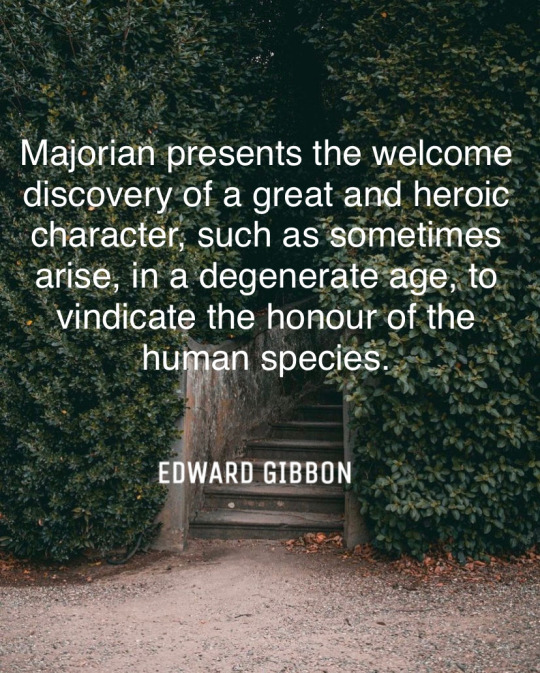
"Majorian presents the welcome discovery of a great and heroic character, such as sometimes arise, in a degenerate age, to vindicate the honour of the human species."
— Edward Gibbon
#edward gibbon#majorian#julius valerius majorianus#emperor#ancient rome#roman empire#quote#quotes#roman#romans#history#europe#european#western roman empire#roman emperor#majorianus#noble#heroes#hero#heroic
12 notes
·
View notes
Text
FLAVIVS AETIVS
SERVA ME
SALVM ME FAC AETIVS
im gonna be real everypony, the Visigoths are sacking Rome.
2K notes
·
View notes
Text
Tumblr Biography: Julius Caesar 🕊️
🎖️ Emerging victorious from the civil war, Caesar became 🫵🏻 dictator of Rome. But would he use his power to ✍️ reform the republic or to make himself a 👑 king?
#civil war#civil war 2024#victorious#dictatorship#the great dictator#dictateur#dictator trump#benito#roman republic#republicans#the republic#reformation#royalty#royal#royal family#western roman empire#circus maximus#pieta#la pieta#romulus and remus#triumphal arch#lasagna recipe#fettucine#fettuccine alfredo#fettuccine pasta#pizza sauce#pizza shop#osso buco#polenta#gnocchi
0 notes
Text
#history#franks#french#battle#ancient history#strategies#archaeology#roman#roman empire#roman history#alemannich#alemanni#clovis#european history#french history#german history#western roman empire#alemanni history#wars#rise of empires: ottoman
0 notes
Text
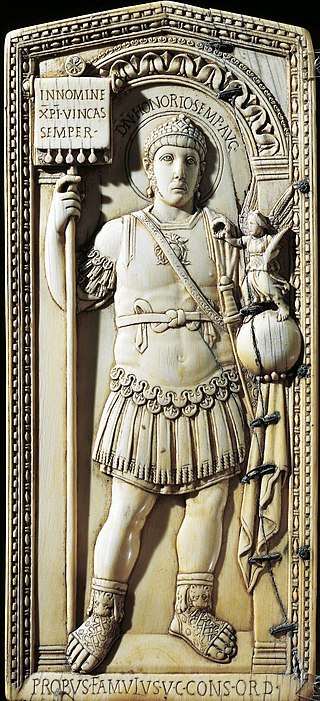
Ivory diptych depicting emperor Honorius, Roman, dated 406 AD
110 notes
·
View notes
Text
The Ostrogoths

The Ostrogoths are one of two major groups which made up the Goths. The word literally means “the eastern Goths”. It is assumed that classical writers divided the Goths into east and west as a reference to where they lived, and not as tribal identity or origin story.
Archaeologically, there are plenty of similarities between the Ostrogoths and the Visigoths. For example the so-called eagle brooches (image above) are very similar. However the Ostrogoths were more generous in grave goods than their western “cousins”, with most finds being exceptionally decorated.
The earliest cultural expansion of the Goths was located in modern Ukraine. Hunnic expansion forced the goths further south to southwest into Rome. The Ostrogoths were caught between the Huns and the Romans and often switched sides. After the Hunnic empire fell, the road to Rome was open.
Theodorik entered modern day Italy with his troupes and made Ravenna the capital of his empire (instead of the city of Rome). The Western Roman empire had “fallen”, a Germanic king ruled Italia and the mythology of Theodorik was born.
Grave goods found in Cesena, Italia. 5th century.
Museum numbers: FG 1068, FG 1069, FG 1240, FG 461, FG 1610, FG 1611 & FG 1612
Germanisches Nationalmuseum, Nürenberg - Germany
#frankish#merovingian#viking archaeology#archaeology#carolingian#charlemagne#field archaeology#viking mythology#merovingian archaeology#germanic mythology#norse mythology#anglo saxon#viking#field archaeologist#frisian#odin#vikings#germanic#germanic folklore#germanic archaeology#visigoth#visigodos#ravenna#rome#western roman empire#roman empire#wodan#anglo saxon archaeology#history#jewelry
54 notes
·
View notes
Text
#ancient rome #roman empire


FLAVIUS AETIUS (391-454 AD) who defeated Attila the Hun in the Battle of the Plains. He was the highest-ranking officer in the Western Roman Empire in the late 5th century . Work by digital artist and illustrator Joan Francesc Oliveras Pallerols.
133 notes
·
View notes
Text

Giovanni Antonio Pellegrini (Italian, 1675-1741) Apollo, 1718 Mauritshuis, Den Haag
#Giovanni Antonio Pellegrini#Apollo#1718#1700s#art#fine art#european art#classical art#europe#european#fine arts#oil painting#europa#mediterranean#italian art#italian#italy#apollo#greek mythology#mythological art#mythological#mythology#southern europe#cradle of civilization#roman empire#greek#greece#western civilization
210 notes
·
View notes
Text
christianity is basically the OG leftist movement that got co-opted. rome converting to christianity was like if unions got super popular and amazon did an advertising campaign praising unions but changed none of their policies. like this weird “western civilization-christian values” stuff is just roman values. which was exactly what christianity was rebelling against.
#rome#ancient rome#chirstianity#roman catholic#the roman empire#religion#spirituality#western values#western civilization#chritistian values#left#leftist#punk#counterculture#energy#metaphysical#greek gods#greek mythology#hellenic deities#hellenic pagan#hellenic polytheism#hellenic worship#hellenism#helpol#hermes#paganism#gnosticism#hermeticism#lord hermes
35 notes
·
View notes
Text

Golden Hour (+ lineart below cut)
I took a picture of the lines for once and did some basic crappy photo editing on my phone, so you could probably print this out and use it as a coloring page or something if you so wish lol. Do with it what you will.

#honkai star rail#dr ratio#veritas ratio#aventurine#aventurine hsr#cherallart#as you can see i forgor i wanted to draw his glasses til like. last second#i can’t believe it’s been like 2 whole months since I last did a whole like. watercolor illustration#part of that’s been bc I’ve been having a bit of a rough semester bc adhd med issues (which are resolved now)#but I really wanted to draw aventurine and ratio. my boys#i’ve been LOVING penacony so far so I needed to get something nice out#anyway I did this while my s/o and I alternated between reading a 500 pg long history book out lout to each other#it’s called ‘the inheritance of rome’ and kinda covers what happened after the collapse of the western roman empire#and tries to identify and explain all the cultural echoes and reverberations and transformations that rose from its ashes#throughout europe north africa and the middle east. anyway it’s super interesting and I highly recommend it#the late antique period is not something often covered/talked abt in public ed hist classes. at least not when I was goin through em#or the transitory period between it and the early medieval period at least#i still got 150 pages left and a final paper due on it in like 4 days but it’s only a 5 pg minimum and I’m a wordy bitch so#i think i can make it#anyway back to that I go
114 notes
·
View notes